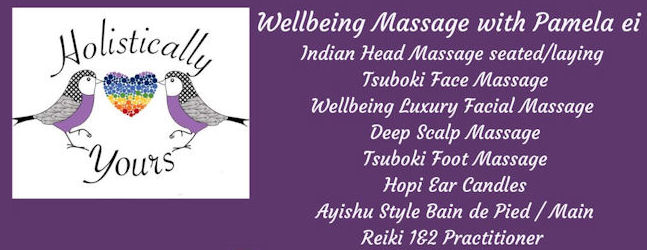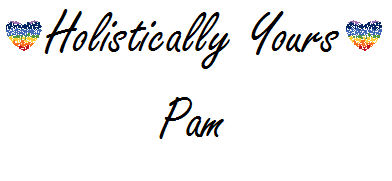
A few months ago I shared Part 1 What happens when we Relax and included the Benson Technique, this article is a little more in depth and includes information about:
- Visual imagery
- Progressive muscle relaxation
- Massage
- Deep breathing
- Meditation
- Yoga
What are the 4 basic elements of the relaxation response?
A quiet environment, a mental device (known as a mantra” in most forms of meditation), a passive attitude, and a comfortable position.
What is the Relaxation Response?
Simply put, the relaxation response is the opposite of your body’s stress response—your “off switch” to your body’s tendency toward fight-or-flight.
It’s one name for what happens when your parasympathetic nervous system is in charge of your body functions The counterpoint to the stress response is the relaxation response, which allows autonomic nervous system functioning to return to normal.
This part of your nervous system regulates the work of your organs and glands while you’re at rest.
It’s one name for what happens when your parasympathetic nervous system is in charge of your body functions.
Your relaxation response kicks in when you feel safe. It can actually block effects from your body’s response to stress.
These changes are good for your mental and physical health.
Your Heart Rate Slows
Your Blood Pressure Goes Down
Your Digestion Improves
Your Muscles Relax
You Hurt Less
Your Immune System Works Bette
Your Breathing Slows Down
Induce relaxation by breathing more slowly and deeply.
“Take a deep breath,” you might tell someone who’s in a panic. There’s a good reason for that. When you’re stressed, breathing speeds up. Breathing too fast may lead to low levels of carbon dioxide in your blood, which could make you dizzy and weak.
But relaxation slows your breathing rate. You can also help yourself relax with slow, controlled breathing, around 6 breaths a minute.
You Have Better Blood Sugar Control
Relaxation may help keep your blood sugar more steady.
Stress hormones can make your blood sugar rise. And if you have diabetes, the effort it takes to manage your condition may amp up your stress.
Relaxation can help you get a handle on your blood sugar (though it can’t take the place of medicine). To get there, exercise regularly and get enough sleep. Try relaxation practices like Meditation or Yoga or have a Massage to help you mellow out further.
You Sleep Better
Relaxation techniques like deep breathing can help switch on your relaxation response. They’re sometimes used as a treatment for insomnia. If you would like further help with sleep then don’t hesitate to contact me, or on my website there are some hints and tips over at Sleep Matters from foods to lifestyle.
How Can You Relax?
Gardening, visual imagery, massage, cooking, and reading may help you relax.
Some people unwind while they garden, cook, or read. Others pray or meditate.
Some will Run, Walk in nature, swim or cycle.
You can explore further techniques such as:
Visual imagery
Guided imagery is most often used as a relaxation technique. It involves sitting or lying quietly and imagining yourself in a favorite peaceful setting such as a beach, meadow, or forest.
Visualization with deep breathing
Begin breathing deeply, focusing on your breath. Then, become fully aware of your body, beginning with your toes and slowly traveling to the crown of your head. Focus on each of your five senses as you breathe. Next, visualize the stress leaving your body in waves with each breath.
This is a very effective method for anxiety.
Progressive muscle relaxation
(PMR) is a relaxation technique targeting the symptom of tension associated with anxiety. The exercise involves tensing and releasing muscles, progressing throughout the body, with the focus on the release of the muscle as the relaxation phase.
PMR teaches you how to relax your muscles through a two-step process.
First, you systematically tense particular muscle groups in your body, such as your neck and shoulders. Next, you release the tension and notice how your muscles feel when you relax them.
To try PMR:
- Find a peaceful and quiet place to do the exercise. …
- Keeping the mouth closed, inhale deeply and slowly through the nose. …
- Repeat these deep breaths three or four more times. …
- On the fifth inhale, squeeze the muscles in the toes and feet and count to four. …
- Repeat step four, this time for the calf muscles.
Deep breathing
Daily deep breathing exercise (DBE) can lower resting blood pressure (BP) and reduce stress and anxiety.
How to Deep Breathe
- Find a comfortable, quiet place to sit or lie down. …
- Place one hand on your belly, just below your ribs. …
- Take a regular breath.
- Now take a slow, deep breath. …
- Holding your breath, pause for a second or two.
- Slowly breathe out through your mouth. …
- Do this several times until you have a calming rhythm.
How often should you deep breathe?
At first, practice this exercise for five to 10 minutes about three to four times per day. Gradually increase the amount of time you spend doing this exercise, and perhaps even increase the effort of the exercise by placing a book on your abdomen.
For more hints and tips you can go to Take A Breath on my website and you can read about the Benson Method there as well.
Meditation
Many people seek out meditation as a stress-management tool, and for good reason. Meditation can induce a relaxation response in the mind and body that slows your speed of thoughts, regulates your breathing, lowers your heart rate and blood pressure, and reduces muscle tension.
Meditation can help you relax deeply and calm your mind
During meditation, you focus on one thing. You get rid of the stream of thoughts that may be crowding your mind and causing stress. This process can lead to better physical and emotional well-being.
What is the response of meditation?
Psychobiological mechanisms underlying the mood benefits of …
Meditation decreases blood pressure, heart rate, cortisol and cytokine levels. Meditation increases self-compassion, dispositional mindfulness and meta-cognition. Meditation improves attention and memory.
Yoga
Yoga engages your mind, body, and breath in harmonious alignment. Through specific poses, controlled breathing, and mental focus, yoga helps activate your parasympathetic nervous system, which is responsible for initiating relaxation and reducing stress hormones in the body.
Relaxation Response and How Restorative Yoga contributes
The relaxation response is a magical moment in the body’s nervous system when we make the switch from our sympathetic response to a parasympathetic one.
While that doesn’t sound like much, the implications of this can be truly profound and far-reaching through our bodies and our minds
Massage
Physical benefits of massage include:
- Improved circulation.
- Decreased muscle stiffness.
- Decreased joint inflammation.
- Better quality of sleep.
- Quicker recovery between workouts.
- Improved flexibility.
- Less pain and soreness.
- Strengthened immune response.
What happens to your body after a massage?
Increase in circulation improving the exchange of fluids to tissues. Massage stretches muscles transversely as well as lengthways, which allows scar tissue, adhesions and fascia surrounding muscles to loosen or break down – this can both help in muscle repair as well as releasing muscle tension.
What happens to the brain after a massage
Studies have shown that massage therapy can significantly reduce the levels of stress hormones in the body, such as cortisol. When cortisol levels decrease, it produces a cascade of positive effects in the brain. After a massage, you may feel a sense of relief, improved mood, and increased mental clarity
How long do the benefits of a massage last?
However, in general, most people will experience the benefits of a massage for at least 24 hours after the treatment is over, but they can last an entire week for some. Some of the most common benefits of massage include reduced stress, improved circulation, reduced muscle tension, and increased joint mobility.
Boosts Immune System
Spring is also a time when allergies and illnesses can flare up. A massage can boost your immune system, which can help you fight off these ailments. By increasing blood flow and lymphatic drainage, a massage can help your body rid itself of toxins and other harmful substances. This can improve your overall health and wellbeing, and help you stay healthy throughout the season.
Each massage I adminster has many wonderful benefits to your health and relaxation response. For instance The Indian Head Massage has been aimed to stimulate the body’s natural healing process by:
Removing tension in the head, neck, shoulders and back.
Stimulating the blood flow throughout the body
Restoring the balance between the mind, body and spirit.
I hope you have enjoyed this, I still find it incredible how our body works, hopefully, we can make our lives just that little bit easier on a day to day basis by following some of the techniques.
Looking after our inner selves is definitely the key to longevity.
For any further questions, to chat about Sleep issues, or book a massage or do not hesitate to

La finalité de mon activité est uniquement le bien-être de la personne. Conformément à la législation en vigueur, les massages bien-être que je pratique en l’absence de diagnostic et de traitement thérapeutique, ne s’apparentent en rien, ni dans les contenus ni dans les objectifs, à la pratique de la masso-kinésithérapie, ainsi qu’à toute pratique médicale ou thérapeutique. Il s’agit de techniques manuelles de bien-être et de relaxation uniquement.


